#American Paranormal Research Association
Text
take my hand. play the supernatural interactive website with me
this is yet another thing i found out about through the 2005 supernatural forum when they started talking about passwords they needed for unlocking stuff
once upon a time when you visited supernatural.warnerbros.com you were greeted with this point and click game (?) thingy that was updated as season 1 was premiering, with new stuff being added periodically. for example, the key on the floor, the metal safe and the notepad weren't there in the earliest save of this website on internet archive.

as far as i can tell, the website was created on october 1st 2005, but the earliest messages about it on the forum that i could find are from november 5th 2005.
the combination to open impala's trunk is 11-2-83, which is the hint dean gave on his voicemail when you called him before 'home' premiered
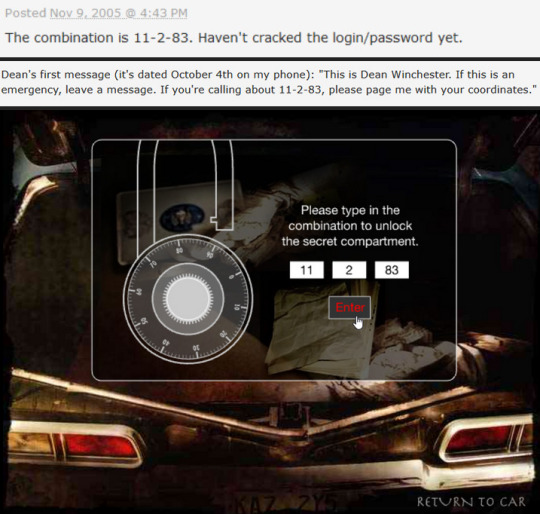
john's journal has been in the game since the beginning, but new pages were being added every couple days/weeks, according to the forum.

i clicked on john's journal last in the video, because that part of the game hasn't been saved by internet archive and the game crashes, sadly, but later on i found a catalogue with all of the pages in it on spn wiki. scans of the pages, transcription of john's 1983 journal

one of the mysteries john's journal provided was, 'what is the significance of 1246?'

a while later the key to open the glove box appeared
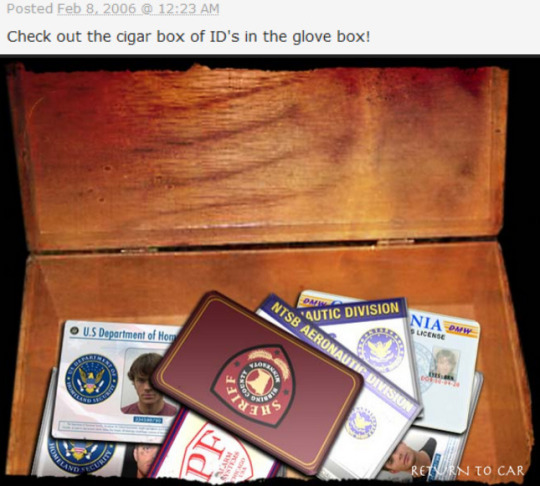

(note the SEX:F on sam's driver's license, of course. but also the fact that it was issued in california...)
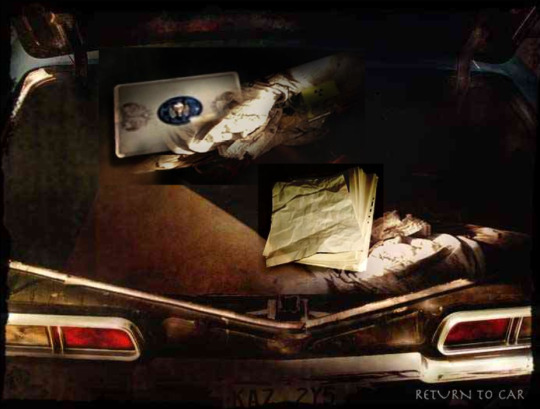
the laptop, according to WB's official description of the season 1 DVD, is dean's! but the files inside it are sam's.
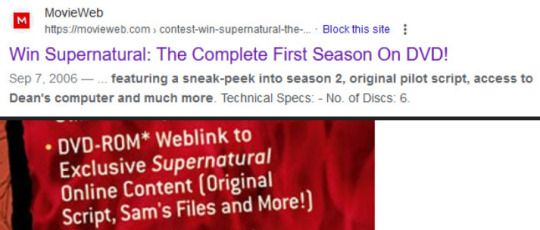
and what are the files inside it? well, on the video you can see two, but there are actually three. we'll get there


'research links' brings up actual paranormal lore blogs, not created by the production team, as far as i can tell, just by regular people on 2005's internet
site links from the bottom up. ghosts2
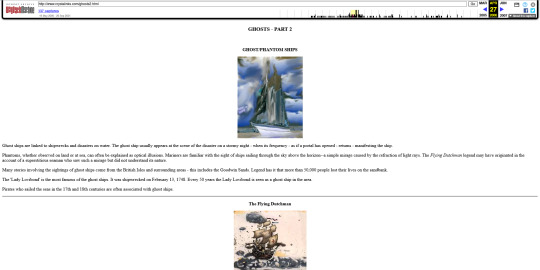
stories/ghost

newspage126

2005's wendigo page on wikipedia

and um.... aaevp dot com... which isn't archived, so i don't know if it was a real site. if it was, it probably belonged to the American Association of Electronic Voice Phenomena

but now, well. the site looks like this

SAD!
'hunter's blogs' is locked, and the password to open it was one of the bonuses on the season 1 DVD (that 'access to dean's computer' / 'sam's files' thing)

you can read jo's blog here
the third item on the laptop, which wasn't saved on internet archive for some reason, was added on the evening of february 28th 2006, after the premiere of 'shadows'. ANDOVER3125550143



it was an audio file of morse code that translated to 'salvation', which would be s01e21
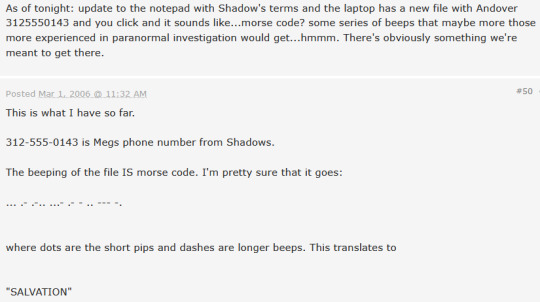
and this box from the floor, which was never opened as far as i could find, was theorized to be the box of family pictures sam and dean got in 'home'
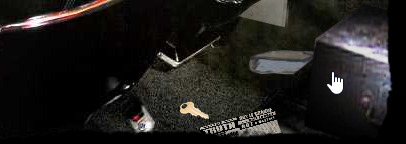

two three more tidbits. rolling stones tickets?

john's journal runes

and after 'asylum' aired, the game added dr. ellicott's journal, but i couldn't find it archived or on the wiki. sorry to this man


and at the end of this journey, as i gazed upon a message that said 'here's a post that gathered up all the information and transcribed john's journal'

i click on it, and what do i find.

that that very post turned into supernaturalwiki.com
thank you and goodnight
717 notes
·
View notes
Text

Bellaire House
Bellaire, Ohio
Bellaire House, built in 1904 over a ley-line, is considered by many one of the most haunted properties in Ohio. Besides this geographical impact, haunted properties thrive on nearby burial grounds and waterways. Behind the Bellaire House sits a Native American internment area and the property lies right across of the mighty Ohio River. There’s the history that could possibly have opened portals. The original owner of the house, Jacob Heatherington, owned a coal mine that ran directly beneath the property.
Legend has it that when Heatherington’s daughter, Eliza, died in the dining room, her brother Edwin became obsessed with trying to reach her beyond the grave. Edwin allegedly summoned mediums to the house and may have unlocked multiple portals to the other side, letting spirits in.
Strange voices, footsteps and other unexplained activity are phenomenon that owner, Kristin Lee, and her family were not aware of until they moved into the house in July 2005. Upon moving in, Lee thought she was going crazy, but then she says something happened to her dog. It actually was levitated by an unseen force and slammed up against the wall. That was just the beginning of years of unexplained, almost stirring experiences.
One evening, a grey apparition appeared to Kristen by leaning across the couch cushion while she was napping. Shocked, she quickly asked the man who he was and why he was in her home, only for Lee to watch him walk slowly to the foyer and disappear into thin air. This mysterious figure seemed to signal the start of a long run of frightening brushes with the paranormal that became more and more violent the longer Kristen stayed in the Bellair House.
Over the course of the next few months, Lee and her family were terrorized with constant bad luck, oppressive energies, and violent paranormal activity.
After years of stress associated with the haunted property, Kristen had enough and offered to sell the Bellaire House to the village for a dollar, hoping to finally be rid of it once and for all. No one wanted to buy the house, and after years of paranormal attacks, locals knew it wasn’t safe for anyone to live behind its walls.
Between the years of 2008 and 2012, numerous ghost hunting teams started to come in and investigate. Since the house has been open to ghost hunters, there has been a number of incidents that the Bellaire House tour guides have classified as demonic activity, the most notorious of which being a full-on physical assault. During an evening tour, one of the building’s guides was carrying an armful of equipment down the stairs when he felt something tug him violently. Thrown off balance and unable to stop himself, his free arm went straight through the second floor window, nearly knocking him clear through.
Skulking shadows, phantom footsteps, and disembodied voices are just some of the strange phenomena that visitors have not only experienced, but documented during investigations of the Bellaire House. Many ghost hunters believe that the activity becomes more and more active as you make your way towards the second floor, which is what is often described as the epicenter of the house’s activity. But it seems that the violent haunting is even bigger than the Bellaire House itself.
Today it operates as an ongoing paranormal research center, opening it’s doors for stay overs, investigations and special events.
#Bellaire House#ghost and hauntings#paranormal#ghost and spirits#haunted locations#haunted salem#myhauntedsalem
27 notes
·
View notes
Text
Miskatonic University
Miskatonic University is a private university based in Arkham, Massachusetts. Miskatonic University was established in 1690 by Ward Phillips. The University originally was heavily modeled on neighboring schools like Harvard, but would begin to move in a different direction early on when, in 1693, Philips gained custody of a number of rare occult books from the collection of the Sanderson sisters in the aftermath of the Salem witch trials. Thus, from an early era, Miskatonic University was heavily colored by an interest in paranormal and occult phenomena. This would in early history largely remain underground–especially in the late 1600’s still dominated by a Puritan ethos. However, the university would gain a reputation for addressing unusual incidents. It was Miskatonic University scholars who were tasked with figuring out what caused the events around Rip Van Winkle’s anomalously long sleep, investigating rumors of a so-called ‘headless horseman’ in the backwoods of New York and carrying out research into reversing the effects of ‘the Alteration’ rendering the ocean treacherous to navigate. Much of this research was carried out in secret by professors ostensibly dedicated to other subjects. In the mid-19th century, the growth of Spiritualism and interest in the occult led to the founding of the Hermetic Order of the Blue Rose at the school, which quickly became a much larger esoteric order. A large archive of occult tomes and supernatural artifacts were accumulated at the school and in 1871, the American Secure Containment Initiative was founded by Artemus Gordon, Brisco County, Sr., and Jonah Hex, who set up the ASCI’s headquarters underneath the campus library.
These elements largely remained underground into the early 20th century, though plenty of cracks were present. Miskatonic University professors helped analyze the origins of the so-called ‘boomfood’ that triggered a wave of gigantism in the 1900’s, recognizing that radioactive particles played a key role. Research into weapons development sponsored by the U.S. government made it a major target during the War in the Air, with German air raids heavily damaging the campus. It has been suggested that Dr. Herbert West’s later experiments occurred because of trauma experienced when West survived a bombing raid that killed an entire class of students in the room with him. A number of Miskatonic University faculty became involved in incidents involving the supernatural or paranormal-Henry Armitage, Randolph Carter, and Seneca Lapham among others-but overall most students were more focused on traditional prestige in this era. While the occasional figure in the vein of William Fitzgerald or Trevor Bruttenholm was attracted to attend by the university’s occult underground, this was the exception rather than the rule well into the 20th century.
However, the mid-20th century saw the paranormal and occult elements of Miskatonic University creep into the open. As part of the Cold War, the US government had developed a keen interest in supernatural phenomenon and developed many agencies–Delta Green, the Unusual Incidents Unit, the Federal Bureau of Control and the Bureau for Paranormal Research and Defense–aimed at researching the supernatural, combating threats it posed and even perhaps weaponizing it. Miskatonic University’s familiarity with these anomalies was seen as a positive by the government. Furthermore, the prestige associated with paranormal and anomalous research was expanding. Columbia University Professor John Montague had helped make parapsychology a much more respectable field. These factors combined to allow for Miskatonic University to become the first university in the world to open up a Department of Paranormal Studies, containing such majors as Parapsychology, Occult Studies and Esoteric Archaeology. The existence of these departments would require unconventional hiring choices and so the likes of paranormal investigators Ed and Lorraine Warren, MACUSA member Gomez Addams, self-proclaimed ‘psychic doctor’ Miles Pennoyer and former news anchor Carl Kolchak would end up among the faculty of the school by 1980. Members of the Department would play a key role in providing information to the White Committee, which sought to determine the implications of the Black Prom incident in Chamberlain, Maine (though much of the opinions of Miskatonic faculty were discarded by the committee).
The establishment of the Department helped the school draw an unorthodox array of students in the years that followed. Alongside the old-money crowd of future lawyers and businessmen came the likes of Lydia Deetz, Jack and Maddie Fenton, Tommy Jarvis, Nathan Dawkins and Nancy Thompson-all figures drawn to the school by its expertise regarding supernatural and paranormal phenomenon. However, this also drew less savory individuals to the school. The likes of Nikolai Wolf (who would resort to human sacrifice to gain fame for his band Low Shoulder), Cole Turner (a half-demon lawyer who briefly became the Source of All Evil) Edgar Zambus (the creator of a strain of zombism that combines supernatural and viral methods of reanimation that he deliberately infected himself with), Roman Armitage (inventor of the infamous Coagula procedure which hijacked the bodies of numerous African-Americans) and Amy Hughe (a serial killer and worshiper of the demon Malphas) all attended or were planning to attend the school only to make use of its occult secrets for not-so-noble ends. The near-miss awakening of Cthulhu in 1983 during World War III only further caused the school to develop a sinister reputation. Senator Bob Roberts launched a quixotic bid to bar students attending the school from receiving federal financial aid in the 1990’s over these ties to black magic, though his proposal never made it in front of the President before Roberts resigned due to being implicated in the Mattiece scandal of 1993.
The more sinister reputation enjoyed by the school was particularly ironic knowing the role of faculty, alumni and current students in preventing a number of prophesied calamities surrounding Y2K. Miskatonic University Professor Iain Gladstone was the first to take notice of multiple prophecies related to the Apocalypse being fulfilled in the lead-up to the turn of the millennium. Working with his colleagues Rayna Kazuki, Leroy Brown and Dirk Pitt, Gladstone worked to recruit a team that could identify potential Antichrists and, if possible, eliminate them. Most of the team were current students at the school-Sarah Bailey, Steve Urkel, Charlie McGee, Casey Connor and Kate Libby were selected based on a combination of desired research capabilities and known or implied paranormal prowess. Beyond the current students, the quartet of professors brought in a few university alumni-the previously mentioned Lydia Deetz, ex-football star Scott Howard and on-and-off X-Men team member Katherine ‘Kitty’ Pryde. Aside from Deetz, the alumni were brought in as additional muscle. Through diligent investigation, this team was able to identify Angel Caine-the son of businessman Robert Caine-as a potential Antichrist working through his father’s business empire to bring about the End Times. Caine had additionally formed an alliance with Adrian Woodhouse, another potential Antichrist who sought to co-opt remnants of older Great Old One cults for his ends. The team brought these two to the attention of the BPRD and, alongside a military forced headed by one Colonel John McNamara, were able to prevent Armageddon.
The modern Miskatonic University has enjoyed an enormous boost to prestige following the Awakening of Magic and the widespread embrace of occult and supernatural research. The school was able to greatly expand operations as a result, pursuing ideas that were fringe even amidst the ‘new normal’ of anomalies. After the Amphibian invasion of 2020, the school became a locus of research into extradimensional phenomenon, discovering the realms of Mewni, World A, Oz, and Throne among many others. Researchers from the school helped create the EVA units used to fight the so-called ‘angel’ incursions of the 2010’s and chronicling the spread of ‘quirks’ across 90% of the human population post-Awakening of Magic. Miskatonic University has also begun tracking temporal anomalies after the Warren & Warren incident of 2021, partnering with Britain’s Anomaly Research Center in the process (the ARC has indicated interest in a ‘temporal storm’ appearing to connect 2023, 1890, 1941 and 2053 in some way). Beyond this renown, however, the highs and lows of a normal prestigious school remain. Students briefly seized control of Armitage Hall in protest of the school accepting a $30 million grant from Fortunato Pharmaceuticals, right-wing pundit Lindsey Bluth-Funke has condemned the school for pushing ‘wokeness’ and allegations that rich alumni bribe there way into the school continue to dog its reputation alongside its more fantastical dimension.

References
Cthulhu Mythos, The Lurker at the Threshold, Hocus Pocus, Rip Van Winkle, The Legend of Sleepy Hollow, Sense and Sensibility and Sea Monsters, The Order, SCP Foundation, The Wild Wild West, The Adventures of Brisco County, Jr., Jonah Hex, The Food of the Gods and How It Came to Earth, The War in the Air, Herbert West: Re-Animator, The Lurker at the Threshold, The Diviners (Bray novel), Delta Green, Control, Hellboy, The Haunting of Hill House, The Conjuring, The Addams Family, Miles Pennoyer, Kolchak the Night Stalker, Carrie, Beetlejuice, Danny Phantom, Friday the 13th, Beyond: Two Souls, Nightmare on Elm Street, Jennifer’s Body, Charmed, Plants vs. Zombies, Get Out, Dead of Summer, A Colder War, Bob Roberts, The Pelican Brief, The Secret World, Explorer Woman Ray, Encyclopedia Brown, Dirk Pitt, The Craft, Family Matters, Firestarter, The Faculty, Hackers, Teen Wolf, X-Men, Holocaust 2000, Rosemary’s Baby, Hatchetfield Universe, Shadowrun, Amphibia, Star vs. the Forces of Evil, Final Fantasy, The Land of Oz, Kill Six Billion Demons, Neon Genesis Evangelion, My Hero Academia, Old (film), Primeval, Bodies (Netflix series), The Fall of the House of Usher (2023), Arrested Development, Scooby Doo, Ghostbusters
14 notes
·
View notes
Text
IRVA (International Remote Viewing Association, Alamogordo, New Mexico)
Ingo Swann was the discoverer and original developer of the remote viewing protocol. Already a widely-collected artist and an accomplished intuitive, Mr. Swann remote viewed the interior workings of a sophisticated quark detector in the physics department at Stanford University, the report of which attracted the interest of the CIA and led to the founding of the consciousness research program at SRI-International from which the military remote viewing program later sprang. Mr. Swann worked with Dr. Harold Puthoff at the SRI lab to create controlled remote viewing (CRV), which provides the foundation for the majority of remote viewing methods in use today, none of which has been able thus far to surpass it in effectiveness.
Mr. Swann will present a two-part lecture on the history and practice of remote viewing. His historical lectures, titled 'Remote Viewing Viewed from the Outside' and 'Remote Viewing Viewed from the Inside', promise to be exciting and informative.
Ingo Swann: Expanding the Information Base About Remote Viewing (2002)
Part 1: Remote Viewing Viewed from the Outside
youtube
Part 2: Remote Viewing Viewed from the Inside
youtube
Bill Eagles
Since the 1970s, the American secret service has been intensively researching the existence and possible use of paranormal techniques in intelligence gathering and psychological warfare. The result of years of US Government-funded research at the renowned Stanford Research Institute (SRI) is the technique of Remote Viewing. This technique makes it possible to recognize and describe in detail things, persons, events and places independent of local and temporal boundaries. Dozens of military personnel have been trained as Remote Viewers. The work of these PSI agents is documented in detail in this film. For the first time, Pentagon and Central Intelligence Agency (CIA) senior officers, Stanford Research Institute (SRI) scientists and Remote Viewers talk about the amazing success of this secret military development.
The Real X-Files: America's Psychic Spies (UK, 1993)
youtube
Steve Murillo (UPARS, Los Angeles)
Angela Thompson Smith: "High Strangeness" Remote Viewing (September 2015)
youtube
Jeffrey Mishlove (New Thinking Allowed)
Paul H. Smith: Remote Viewing of UFOs and other Mysteries (November 2018)
youtube
Daz Smith: Ingo Swann's 'Penetration' (November 2021)
youtube
ParanormalViewing
Talk with Daz Smith: Ingo - Beyond Penetration (Applied Precognition Project presentation, 2021)
youtube
Society for Scientific Exploration
Jessica Utts: Why All Scientists Should Take Psi Seriously (June 2023)
youtube
Dr. Harald Puthoff, Dr. Russell Targ (Electronics and Bioengineering Laboratory, Stanford Research Institute, Menlo Park, California)
Magnetometer Experiment with Ingo Swann (April 1976)
youtube
In early April 1973, in an effort to emerge from the daily boredom of repetitive testing, Ingo Swann suggested that the he and the SRI team once in a while do something far out, something that might reintroduce a sense of adventure, excitement, and enjoyment.
The planet Jupiter was literally far out. NASA had earlier launched Pioneer 10 and 11 to fly-by that planet, and information telemetered back by the two crafts would undergo technical analyses. Information from Pioneer 10 would commence in September 1973.
The only real difference between Jupiter as a “target,” and mundane target objects in the next room, was its distance from Earth. But for Ingo Swann there was another difference. It would be exciting to try to extend one’s ESP to the planet, a form of remote viewing. Jupiter was more remote than the next room—and there might be a thrill of “traveling” in interplanetary space.
Ingo Swann and Harold Sherman compare notes of their planetary probe of Jupiter over the Phone (April 1973)
youtube
Saturday, February 24, 2024
8 notes
·
View notes
Text
Haunted States of America: Florida

Daytona Ghost Walk: Haunting Tales: The History, Folklore, and Science Behind the Tour (2002) by Doris "Dusty" Smith
Dusty Smith was the founder of the Haunts of Daytona Ghost Tour, the Daytona Beach Paranormal Research Group, the International Association of Cemetery Preservationists, and the charity Saving Graves. Daytona Ghost Walk is a great example of the kind of book that inspired the Haunted States of America series: one written by an author heavily involved in local culture. Unfortunately, since Dusty Smith passed away, it seems that these organizations have since gone defunct.
Dusty Smith wrote multiple other books, several of which we have at the BPCL:
Ghost Hunting 101: A Guidebook for the Beginner (2011)
The Haunted Halifax River Cruise: Haunting Tales of Murder, Mystery & Mayhem (2002)
The Riverfront Park Ghost Walk: The Spirits of the Downtown Business District (2002)
If you're interested in graveyard preservation in general, we have the unrelated A Graveyard Preservation Primer (1990) by Lynette Strangstad with the Association for Gravestone Studies.
The Browne Popular Culture Library (BPCL), founded in 1969, is the most comprehensive archive of its kind in the United States. Our focus and mission is to acquire and preserve research materials on American Popular Culture (post 1876) for curricular and research use. Visit our website at https://www.bgsu.edu/library/pcl.html.
#bgsu#libraries on tumblr#haunted states of america#daytona beach#florida#ghost tours#graveyard preservation
9 notes
·
View notes
Text
Julian Hawthorne, the Boy Ghost of the Seven Gables
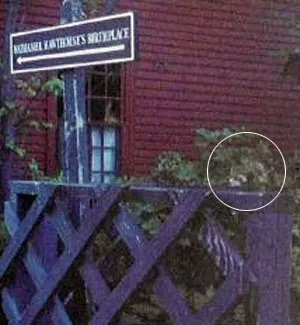
The Seven Gables is a historic house located in Salem, Massachusetts, known for its rich history and alleged paranormal activity. Among the many ghostly tales associated with the Seven Gables, one of the most famous is the story of Julian Hawthorne, the boy ghost who is said to haunt the house.
Julian Hawthorne was the son of Nathaniel Hawthorne, the renowned American author who wrote the novel "The House of the Seven Gables." Julian was a young boy who lived in the house during the 19th century, and his ghost is said to have lingered there long after his death. Legend has it that Julian's spirit has been sighted and experienced by visitors to the house, making him one of the most famous ghostly residents of the Seven Gables.
According to the tales, Julian's ghost is said to manifest in various ways. Some claim to have seen a young boy with a mischievous grin, dressed in old-fashioned clothing, roaming the halls of the house. Others have reported hearing the sounds of a child's laughter and footsteps when no one else was around. There have also been accounts of objects moving or being displaced on their own, with Julian's spirit being blamed for these occurrences.
One of the most well-known stories associated with Julian's ghost is the account of a paranormal investigation conducted at the Seven Gables by a group of researchers. The investigators claimed to have captured an EVP (electronic voice phenomenon) of a child's voice whispering "Julian" during their investigation, further fueling the belief in Julian's ghostly presence.
Despite the numerous stories and sightings, there are skeptics who question the authenticity of Julian Hawthorne's ghostly presence at the Seven Gables. Some argue that the stories may be embellished or fabricated over time, as the Hawthorne family's history and the house's reputation grew. Others attribute the reported paranormal activity to natural explanations or psychological phenomena.
Nevertheless, the story of Julian Hawthorne, the boy ghost of the Seven Gables, continues to captivate visitors and paranormal enthusiasts alike. Whether one believes in ghosts or not, the legend of Julian's spirit adds to the mystique and allure of the historic Seven Gables house. The tales of his ghostly presence are passed down through generations, and visitors to the house continue to be intrigued by the possibility of encountering the spirit of a young boy from the past.
#paranormal#ghosts#ghost hunting#apparition#ghost stories#haunted houses#haunting#spirits#magick#occult#esoteric
2 notes
·
View notes
Text
Unveiling the Shadows: Navigating the Allure and Caution of Haunted House Videos
In the ever-evolving landscape of digital content, the fascination with the paranormal has discovered a new sanctuary across various online platforms. Haunted house videos, offering an array of spine-chilling explorations to staged encounters, have emerged as a captivating source of entertainment for thrill-seekers and horror enthusiasts alike. However, within this realm of spectral allure, it is imperative to approach such content with a discerning eye, recognizing both its potential for exhilaration and the necessity for caution. Moreover, it's crucial to acknowledge that not everyone is drawn to the idea of haunted houses, and there are valid reasons why some might choose to steer clear of these spine-tingling experiences.
Embarking on Haunted House Adventures Online:
YouTube Expeditions: YouTube stands as a central hub for haunted house enthusiasts, boasting channels dedicated to investigating and exploring allegedly haunted locations. From the suspenseful journeys of BuzzFeed Unsolved to the gripping narratives of Ghost Adventures, a wide spectrum of content awaits those seeking a paranormal fix.
Supernatural Offerings on Streaming Services: Major streaming platforms like Netflix, Hulu, and Amazon Prime Video provide a plethora of documentaries, TV shows, and movies centered around haunted houses. Titles such as “The Haunting of Hill House,” “The Conjuring,” and “American Horror Story” offer a mix of fiction and supposedly true paranormal accounts, catering to diverse tastes.
Social Media Scares: Short-form content on platforms like TikTok and Instagram caters to those who prefer bite-sized, spooky experiences. Creators specialize in crafting brief, chilling videos perfect for quick consumption and sharing, amplifying the reach and impact of haunted house narratives.
Approaching Haunted House Videos with Discretion:
While the allure of haunted house videos is undeniable, it is essential to recognize that not all content is authentic. Some videos are staged for entertainment purposes, blurring the lines between reality and fiction. To ensure a genuine exploration of paranormal activity, viewers should conduct thorough research and engage with content from reputable sources, thereby preserving the integrity of the experience.
Reasons to Exercise Caution Around Haunted Houses:
Safety Concerns: Haunted houses often prioritize fear-inducing elements such as low lighting, narrow passages, and sudden scares. While these features heighten the thrill factor, they also increase the risk of accidents and injuries, necessitating caution and vigilance during exploration.
Personal Triggers: Haunted houses frequently incorporate themes and imagery that can trigger anxiety, fear, or trauma in certain individuals. For those with specific sensitivities, the experience may be unpleasant or even psychologically harmful, highlighting the importance of respecting individual boundaries and triggers.
Beliefs in Paranormal Activity: Some individuals hold beliefs in the supernatural and may perceive haunted houses as potential locations for malevolent spirits. Visiting such places could be seen as inviting unwanted spiritual energy, raising concerns about spiritual harm and personal safety.
Respecting Personal Choices and Preferences:
Ultimately, the decision to engage with haunted house content or visit physical locations is deeply personal. While some people revel in the adrenaline rush of fear, others may choose to avoid unsettling or potentially dangerous experiences altogether. Respecting individual preferences and understanding the potential risks associated with such encounters ensures that the exploration of haunted houses remains a matter of personal choice, empowering individuals to navigate the shadows with both excitement and caution.
In Conclusion:
Haunted house videos offer a thrilling glimpse into the world of the paranormal, catering to a diverse audience with varying levels of curiosity and courage. Whether embarking on a digital adventure or choosing to avoid haunted houses altogether, individuals should prioritize safety, mindfulness, and respect for personal boundaries. In the realm of the supernatural, the line between fascination and fear is subjective, underscoring the importance of approaching haunted house experiences with both enthusiasm and discretion. By embracing a balanced perspective, enthusiasts can uncover the mysteries of the unknown while safeguarding their well-being in the shadows of the haunted house realm.
0 notes
Text
youtube
March 25th Rosemarie Pilkington Gilbert Roller and the Bindelof Case
Presented for the ParaMOOC2023 on March 25th:
Biography: Rosemarie Pilkington has been interested in psychic phenomena since childhood when she heard family stories of unexplained visions and
strange happenings. As a young adult, she immersed herself in articles,
books, and journals on the subject and attended seminars and lectures
sponsored by the American Society for Psychical Research (ASPR) in New
York. She has a B.A. in Music and an M.S. in Education. Under the mentorship of world-renowned psychologist and parapsychologist Stanley Krippner, she earned her Ph.D. in Psychology (Consciousness Studies) from Saybrook Graduate Institute, doing her dissertation on children’s ESP. She presented the results of her experiment to the Parapsychological Association, of which she is an Associate Member.
She has imparted what she has learned and experienced to others by teaching classes in parapsychology and alternative healing methods, lecturing, and especially by writing. She was a consulting editor for the newsletter Mind and Medicine. She has written book reviews and articles for publications as varied as FATE magazine, the Journal of the American Society for Psychical Research, and the Journal of Scientific Exploration. She is also the author of such books as Men and Women of Parapsychology: Personal Reflections (1987) and The Spirit of Dr. Bindelof: The Enigma of Séance Phenomena (2006).
Séance Science: A Realistic Look at Paranormal Phenomena: https://seancescience.com
Parapsychology Foundation: https://parapsychology.org
Parapsychology Online: https://parapsychologyonline.org
1 note
·
View note
Link
0 notes
Text
It’s Writers in Horror Recognition Month
Our next profile for Writers in Horror Recognition Month is Joe Augustyn
Joe Augustyn is an American screenwriter, film producer, and author.
Following graduation from AFI he worked as an associate of Steve Golin and Joni Sighvatsson, who later went on to found Propaganda Films. After producing two features he retired from producing to focus exclusively on screenwriting, completing assignments for such companies as Tristar, Propaganda and countless indie producers. Augustyn's first feature, Night of the Demons, based on his original screenplay Halloween Party, was remade in 2008 by 7 Arts Productions, starring Shannon Elizabeth and Edward Furlong. Augustyn was not involved creatively in the remake and has pointed that out in interviews.
His second feature film as writer-producer was Night Angel. Based on Augustyn's original spec screenplay titled Lilith, it was the first feature film based on the ancient legend of the arch-succubus Lilith. With his health compromised by the stress of this production, Augustyn subsequently retired from producing to focus on writing.
His next produced screenplay was Night of the Demons 2 based on a story co-written with playwright James Penzi.
In 2001 Augustyn returned to Philadelphia to care for his elderly parents and after completing a few screenplay writing assignments and specs he began writing novels and short stories.
Augustyn's first novel The Nine Lives of Felicia Miller was published by Wildcat Press in 2012.
Besides writing fiction, Augustyn is an advocate for serious paranormal research, believing that scientific investigation into the metaphysical will reap benefits for humanity by confirming a spiritual aspect to the universe which in turn will foster greater respect among people and nations. He holds a Vedic view of reality, which holds that spirit precedes corporality, in the same way that energy generates matter, as well as a quantum connection of everything that exists on a spiritual level.
In 2014 he published Dead Rain: A Tale of the Zombie Apocalypse and Ghostwriter: The Polaroid Ghost & Other True Tales of the Paranormal, a non-fiction book of personal paranormal experiences including eyewitness accounts of events that took place in "the Wright House" (so named after the spirit that allegedly identified itself by name, writing on Polaroid film in ectoplasmic scrawl.) Augustyn was present at a Halloween party at which several guests who brought their own Polaroid cameras snapped remarkable photos. The case has been featured on several TV and cable shows including Sightings, My Ghost Story, Unexplained Mysteries, and Fact or Faked: Paranormal Files. It has been investigated by parapsychologist Kerry Gaynor of UCLA and photo experts from Polaroid Corporation and Brooks Institute, all of whom were baffled. Investigators from Fact or Faked: Paranormal Files attempted to debunk the ghostly Polaroids using carefully controlled experiments but instead got inexplicable results. Combined with voice stress analysis of the occupants of the house that indicated they were telling the truth, they declared the case authentic. On several occasions visitors brought their own Polaroid cameras loaded with their own film and also got ghostly results.
Actor and paranormal enthusiast Dan Aykroyd contributed a glowing introduction to GHOSTWRITER, calling it "an essential volume for any serious seeker in the understanding of the paranormal."
0 notes
Text

Bellaire House
Bellaire, Ohio
Bellaire House, built in 1904 over a ley-line, is considered by many one of the most haunted properties in Ohio. Besides this geographical impact, haunted properties thrive on nearby burial grounds and waterways. Behind the Bellaire House sits a Native American internment area and the property lies right across of the mighty Ohio River. There’s the history that could possibly have opened portals. The original owner of the house, Jacob Heatherington, owned a coal mine that ran directly beneath the property.
Legend has it that when Heatherington’s daughter, Eliza, died in the dining room, her brother Edwin became obsessed with trying to reach her beyond the grave. Edwin allegedly summoned mediums to the house and may have unlocked multiple portals to the other side, letting spirits in.
Strange voices, footsteps and other unexplained activity are phenomenon that owner, Kristin Lee, and her family were not aware of until they moved into the house in July 2005. Upon moving in, Lee thought she was going crazy, but then she says something happened to her dog. It actually was levitated by an unseen force and slammed up against the wall. That was just the beginning of years of unexplained, almost stirring experiences.
One evening, a grey apparition appeared to Kristen by leaning across the couch cushion while she was napping. Shocked, she quickly asked the man who he was and why he was in her home, only for Lee to watch him walk slowly to the foyer and disappear into thin air. This mysterious figure seemed to signal the start of a long run of frightening brushes with the paranormal that became more and more violent the longer Kristen stayed in the Bellair House.
Over the course of the next few months, Lee and her family were terrorized with constant bad luck, oppressive energies, and violent paranormal activity.
After years of stress associated with the haunted property, Kristen had enough and offered to sell the Bellaire House to the village for a dollar, hoping to finally be rid of it once and for all. No one wanted to buy the house, and after years of paranormal attacks, locals knew it wasn’t safe for anyone to live behind its walls.
Between the years of 2008 and 2012, numerous ghost hunting teams started to come in and investigate. Since the house has been open to ghost hunters, there has been a number of incidents that the Bellaire House tour guides have classified as demonic activity, the most notorious of which being a full-on physical assault. During an evening tour, one of the building’s guides was carrying an armful of equipment down the stairs when he felt something tug him violently. Thrown off balance and unable to stop himself, his free arm went straight through the second floor window, nearly knocking him clear through.
Skulking shadows, phantom footsteps, and disembodied voices are just some of the strange phenomena that visitors have not only experienced, but documented during investigations of the Bellaire House. Many ghost hunters believe that the activity becomes more and more active as you make your way towards the second floor, which is what is often described as the epicenter of the house’s activity. But it seems that the violent haunting is even bigger than the Bellaire House itself.
Today it operates as an ongoing paranormal research center, opening it’s doors for stay overs, investigations and special events.
#Bellaire House#ghost and hauntings#paranormal#ghost and spirits#haunted locations#haunted salem#myhauntedsalem#paranormal phenomena#ghosts and spirits#ghosts#spirits#hauntings
5 notes
·
View notes
Text
Formula of a Haunting: Investigating the Paranormal with Ghost Hunters' Brandon Alvis and Mustafa Gatollari
Formula of a Haunting: Investigating the Paranormal with Ghost Hunters’ Brandon Alvis and Mustafa Gatollari
Paranormal events have captured imaginations for centuries. After all, who doesn’t love a good ghost story!? With the rise of reality TV in the ’90s, it wasn’t long before TV shows featuring paranormal investigations emerged.
L-R: Mustafa Gatollari and Brandon Alvis
As fun, adventurous dives into the unknown typically depict dramatic moments of cast reactions to what might be going bump in the…
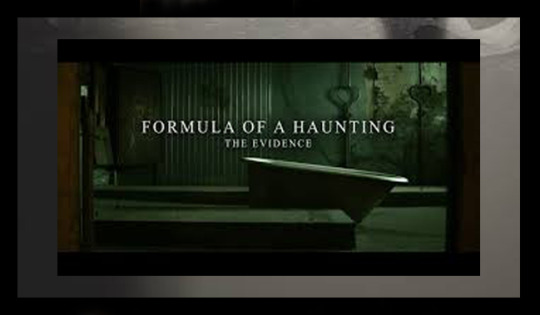
View On WordPress
#American Paranormal Research Association#Andres Pico Abode#Brandon Alvis#Formula of a Haunting - The Evidence#Ghost Hunters#J.B. Moore Home#Mustafa Gatollari#Paranormal Investigation#Villisca Axe Murder
0 notes
Text
A few weeks back, Japan’s ‘killing stone’ split open. Let’s talk about that.
Japanese horror films are world renowned for their artistic prowess, intricate stories and folkloric-inspiration. But no one really talks about the latter. From my research for previous blogposts, I’ve fallen down many a rabbit hole and gotten lost in ancient stories that inspired our favourite scary movies, like The Ring and The Grudge.
So, when I saw that a paranormal Japanese legend had hit the press, last week, I knew what today’s blog would be about.
Turns out, the ‘killing stone’ - or Sessho-seki - has split in half, releasing the demon spirit of Tamamo-no-Mae after 1000 years.
dun dun duuh
Of course, what’s really happened here is that the volanic rock has been splitting over several years due to weathering. And its lethal name? Probably because of the poisonous gases it emits.
And science, yeah, is cool, right. But today we’re talking about some spooky shizz.
Let’s get started.
*snaps latex glove*
The legend of Tamamo-no-Mae
I was about to say that our story starts sometime between the 14th or 16th century - with the Muromachi period, where Tamamo gets her first mention. But we actually need to go all the way back about 3400 years (*m3nt4l m4th5*) to the Shang dynasty in China. Well, right to the end of it: when the last king, King Zhou, shacked up with a woman named Daji. But according to legend, a fox spirit killed and impersonated her.
Fox spirits are entities from Chinese (and East Asian) mythology. These foxes are mischievous tricksters with magical powers. And most of the time, they can disguise themselves as beautiful women. Transforming into Daji, therefore, wasn’t too much of a challenge.
But this fox spirit caused hell of a lot of trouble when it brought on a ‘reign of terror’, resulting in a rebellion that ended the Shang dynasty. After this, it hot-footed it to ancient India to become another partner of a royal figure, influencing him to execute thousands of men. After its second defeat, it returned to China (8th century BC) to play out the same pattern of impersonate, marry and create chaos.
Now we’re in the 14th century AD. 2200 years later (?), the fox heads on over to Japan for the first time, appearing as Tamamo-no-Mae. She was clever, beautiful and Emperor Toba’s favourite partner. But after he became ill, an astrologer was brought in to diagnose the problem. The astrologer sniffed the fox out pretty easily. So, the emperor asked some warriors to kill the fox in the town of Nasu.
When the deed was done, the spirit embedded itself in a nearby rock, becoming Sessho-seki.
A Buddhist monk visited the rock a few hundred years later, exorcising the spirit and claiming it was now at peace.
So, what is it about magical foxes?
Turns out, foxes and humans used to live quite close together, back in ancient Japan. They used to believe that any fox - or kitsune - can shapeshift into human form, and that they possess paranormal abilities that increase as they age.
Kitsune liked to possess young women by entering them beneath their fingernails on through their breasts (yeah, no idea how, either). Much like spirit possession in other cultures, you could be exorcised by a priest.
Today, people can suffer from kitsunetsuki, where they believe they are possessed by a fox. They crave rice, sweet beans, aren’t interested in anything, are restless and can’t keep eye contact.
But its not just in Japan or East Asia that foxes are associated with supernatural powers.
According to Native American legends, foxes are born tricksters that were able to remove their fur and become women. The Celts thought they were cunning, sly creatures. In Scandinavian mythology it is even believed that foxes created the Northern Lights.

If you liked this post, let me know by liking, reblogging or following this blog!
#killing stone#japanese folklore#east asian folklore#fox spirits#spirits#fox#foxes#demons#ghosts#legends#myths#horror films#folklore#scary movie#ghost stories#true ghost stories#real ghost stories
72 notes
·
View notes
Text
The Case of Jane Roberts and Seth, and its Relevance to Endogenic Forms of Plurality
Hello everyone! Last night we finally managed to finish reading New Age ‘Channeling' And Theories Of Dissociation: Applying A ‘Structural Dissociation Of The Personality' Model To The Case Of Jane Roberts. It's an older thesis, but it’s a really cool read.
For those who aren’t aware, Jane Roberts was a medium who often channeled an entity called Seth, who would go on to write several books about the nature of consciousness and the universe. He appeared to her one day quite out of the blue when she was in her thirties, and ever since that day she channeled him and he was able to write about his beliefs. The two of them were the catalyst for a lot of New Age and paranormal beliefs, and she often gave classes on ESP and channeling.
As I was reading, I noticed that there was a lot that may be relevant to the plural community here, particularly the endogenic and tulpamancy community. The whole thesis is a good read, but there are some parts that stuck out to me.
The first is this:
"Seligman and Kirmayer argue that around the world, dissociative experiences take place in three main contexts. One of these is "(1) in response to acute stress or trauma," but the other two are not trauma-related at all. These are: "(2) in socially sanctioned rituals and healing practices that are associated with religious meaning systems, or in artistic performances: and (3) as spontaneous fluctuations in ordinary conscious experience that often go unrecognized or unmarked unless they resonate with local systems of meaning." They point out: "It is often assumed that dissociation across these different settings involves the same underlying psychophysiological mechanisms. However, this remains uncertain given the state of current knowledge about both the mechanisms and functions of dissociation."" (page 29-30)
Interestingly enough, these are also the three main ways of being plural seen in the community. 1 would be traumagenic, 2 could be soulbonds, gateways or tulpamancers (I know none of those are religious per say, but they are socially sanctioned groups that often have “ritualistic” elements or in the case of gateways and soulbonds, spiritual meanings), and 3 could be the endogenic or quoigenic systems who don't fit into any other category. Obviously this is a major oversimplification and may not apply to all systems, but you do tend to see these three categories in the community more often than not.
They also go on to argue that the theory of structural dissociation is very focused on a Euro-American way of healing, namely the "speaking about and owning your traumas" way of healing, which is not always applicable in other cultures and contexts and may not always be desirable or necessary. They also seem more focused on a complex view of dissociation involving culture, context, and origin all influencing each other instead of the simplistic origin=pathology view often seen in research.
Additionally, it would seem as if the creators of the theory of structural dissociation never intended their theory to be taken as a set-in-stone proposition, especially for other forms of dissociation.
They actually acknowledge that: "Our definition of dissociation pertains to a division of the personality in the context of trauma. We are aware that this division may also occur in hypnosis and mediumship, that several other definitions of dissociation also address these other contexts, and that there are some indications that dissociation in these other contexts is also best understood as a division of the personality.{...}However, dissociation in mediums is in several regards different from dissociation in DID.{...]The possible involvement of consciousness and self-consciousness in [...} dissociative parts in mediumship needs to be examined in more detail before a conclusive general definition of dissociation can be formulated." (page 36)
In other words, they know it is possible to be plural/have multiple identities in other contexts without it being DID. They acknowledge this. The creator of the theory of structural dissociation never intended for it to be used in other contexts, and it does not explain how dissociation works in general.
When applying it to the case of Jane Roberts, the theory of structural dissociation also fails to explain a large portion of her experiences with Seth and why they are non-pathological/relatively benign in comparison to the pathological manifestations often seen in DID. Likewise, it also fails to explain why channeling is often non-pathological and positive. (Note that the theory of structural dissociation itself treats DID as necessarily maladaptive; this is not what we’re personally saying but what the thesis states.) The author of the thesis believes that if one is to apply it to other forms of dissociation you need to be extremely sensitive to the fact that it’s not made to explain those types, and may not adequately explain much of how those types work.
It’s a very long thesis, so you might wanna reserve a few hours to read and digest the material. Hopefully this is as interesting to you all as it was to us!
#positivelyplural#plurality#endogenic systems#endogenic#actuallyendogenic#tulpamancy#spiritual plurality#spiritual systems#soulbonding#gateway systems#actuallygateway
54 notes
·
View notes
Text
American Psychologist – the official peer-reviewed academic journal of the American Psychological Association – has published a paper that reviews the research so far into parapsychological (‘psi’) abilities, and concludes that the “evidence provides cumulative support for the reality of psi, which cannot be readily explained away by the quality of the studies, fraud, selective reporting, experimental or analytical incompetence, or other frequent criticisms.”
The new paper – “The experimental evidence for parapsychological phenomena: a review“, by Etzel Cardeña of Lund University – also discusses recent theories from physics and psychology “that present psi phenomena as at least plausible”, and concludes with recommendations for further progress in the field.
The paper begins by noting the reason for presenting an overview and discussion of the topic:
“Most psychologists could reasonably be described as uninformed skeptics — a minority could reasonably be described as prejudiced bigots — where the paranormal is concerned”. Indeed, it quotes one cognitive scientist as stating that the acceptance of psi phenomena would “send all of science as we know it crashing to the ground”.
To address this, the paper quickly outlines some current theories in physics and psychology that might help to explain psi effects without smashing the pillars supporting the scientific establishment: quantum physics, ideas on the nature of consciousness, theories of time, and psychological and evolutionary theories of psi.
Cardeña also notes that, despite its current, controversial reputation, the field of psi research has a long history of introducing methods later integrated into psychology (e.g. the first use of randomization, along with systematic use of masking procedures; the first comprehensive use of meta-analysis; study preregistration; pioneering contributions to the psychology of hallucinations, eyewitness reports, and dissociative and hypnotic phenomena). And some of psychology’s most respected names, historically, have also shared an interest in parapsychology, including William James, Hans Berger (inventor of the EEG), Sigmund Freud, and former American Psychological Association (APA) president Gardner Murphy.
The meat of the Cardeña’s paper, though, is in the listing of positive results in various areas of research that support the psi hypothesis.
The Ganzfeld:
Research on ganzfeld has been meta-analyzed repeatedly and is the most consistently supportive database for psi of the last few decades… The most recent and comprehensive meta-analyses of the database by Storm et al. (2010b) and Williams (2011) supported a psi effect.
Implicit cognition:
In implicit anomalous cognition studies, volunteers respond to a psychological task, with a hidden psi aspect to it… Although there has not been a meta-analysis of these studies, Palmer (2015b, p. 227) concluded in a review that studies with a hidden reward had more significant outcomes than would be expected by chance.Related to this paradigm, studies designed by Cornell psychologist Daryl Bem (2011) tested the hypothesis that a future stimulus might have a retroactive influence on a previous response… Bem (2011) reported on nine different protocols with more than 1,000 participants and found that all but one of them was independently significant and that the mean effect size was significant.‘
Dream telepathy‘:
In everyday life, ostensible anomalous cognition often occurs during dreams. The first comprehensive analysis of controlled studies was carried out by Yale psychologist Irvin Child (1985) on the dream psi studies conducted at the Maimonides Medical Center sleep lab… Child reported that in 20 out of 25 experiments the dream content on average had been correctly matched (blindly) to the target directly or on the top half of a binary division of multiple choices at a better than chance level, with a probability against chance of 1.46 x 10-8.
Remote viewing:
RV (remote viewing) is a technique in which an individual describes a place, chosen at random, where a sender is located at the present or at a future time (there may also be just a location chosen without any observer there)… [In] Baptista et al.’s (2015) summary of the available data the overall effect remains significant (Baptista et al., 2015).
Forced-choice studies:
In forced-choice studies, the guessing possibilities are finite and the possibilities are known by the person, for instance cards in a randomized deck. The protocol measures whether the participant can guess correctly more often than would be expected by chance. Honorton and Ferrari (1989) conducted a meta-analysis of forced-choice precognition research conducted between 1935 and 1987 by 62 investigators…the analyses for all of 309 experiments and for the 248 homogeneous ones [reveal] highly significant but very small effect sizes.…A second meta-analysis of forced-choice experiments was carried out by Storm, Tressoldi, and Di Risio (2012) on 91 studies conducted between 1987 and 2010, and on 72 homogeneous studies. They concluded that there was a small but significant effect, and no evidence that the results could be explained by low-quality designs…or selective reporting.
Anomalous perturbation:
Anomalous perturbation refers to the ostensible influence of intention on nonobservable systems, evaluated statistically (there are no meta-analyses of anomalous force).Schmidt (2015) summarized his meta-analyses of three areas: (a) direct mental interaction in living systems, such as measuring the electrodermal activity (EDA) of a receiver while a distant agent is, at random times, trying to make that person aroused or calm; (b) remote staring, or changes in the EDA of a receiver as an agent looks at him/her through video at random times from a separate room; and (c) remote helping (or attention-focusing facilitation), in which a remote helper tries at random times to help a meditator focus on a target. [Schmidt’s data] shows that all three research paradigms were supportive of psi.
Dice experiments:
Trying to affect the fall of dice, typically in a machine to avoid possible manipulation, was a common research paradigm used in the mid-20th century. Radin and Ferrari (1991) meta-analyzed 148 studies involving more than 2 million dice throws, in which participants intended to affect the fall of dice without touching them, and which produced a highly significant but small effect.
Micro-PK:
Bösch, Steinkamp, and Boller (2006) metaanalyzed 380 studies on attempts to affect random number generators (RNGs). [The data] shows significant but very small effects.
Overall, Cardeña concludes, this overview of meta-analyses of various different research protocols “supports the psi hypothesis”, satisfying the criteria of a critic of psi “who demanded replicability, consistency of effects, and cumulativeness”.
The meta-analyses, conducted on studies using different protocols and by different researchers, provide cumulative vertical and horizontal support of psi. Vertical in the sense that across time different protocols have continued to produce positive results beyond what would be expected by chance, and with increasing methodological rigor; horizontal in the sense that there is support for psi across research areas. If only one or a few protocols out of 10 were significant and the rest were not, it would be easier to speculate that the supportive results might be due to an artifact. In addition, the rigor of the psi meta-analyses has increased with time and typically include evaluation of possible selective reporting, quality of studies, and so on.
Cardeña finishes with some suggestions for researchers to integrate into future studies of psi – in particular, the need for using more ‘selected participants’ (that is, those people that seem to be ‘better’ at psi than others). He notes that while psi laboratory results are scientifically significant, they are also small in size – and this could be because they are the result of the ‘averaging’ of larger effects of talented individuals mixed with the smaller (or even null) effects of others.
According to Cardeña, “characteristics shown to increase the likelihood of performing well in a psi experiment include a belief that one will do well in the study, some psychological traits (e.g., extraversion and openness to experience), a mental practice such as meditation, and previous experience in a psi experiment”. Artists in particular “tend to score better than chance and other groups”, he says, and “there is evidence that testing while a participant is in a different state of consciousness than the ordinary, waking one is conducive to psi performance”
But the paper also mentions one more suggestion to help psi research become more accepted by mainstream science: the need for “a change in the editorial policy of some journals so that the default position is not to automatically reject papers on psi but to have them evaluated on their own merits by knowledgeable and open reviewers”. Given the appearance of this paper in American Psychologist, that may now be happening.
#american psychologist#magick#psi#evidence#high strangeness#ganzfeld#implicit cognition#dream telepathy#remote viewing#forced choice studies#anomalous perturbation#dice experiments#micro pk
10 notes
·
View notes
Text
Favorite Monsters and Cryptids
1) Black-Eyed Children: What these beings are no one knows. Some cite them as being demons or vampires who require permission to be allowed in. Some say they're alien-human hybrids or tulpas (thought beings). Even interdimensional entities or the ghosts of deceased children. They are described as either wearing old-timey clothing or dark-colored hoodies. They have extremely pale, oftentimes peachy skin tones and speak in a monotonous, adult-like fashion. They approach their target's home or car to knock or their door or window saying that they needed to get in because of bizarre reasons. If they are further denied entry, they become increasingly enraged and reveal their dark, turquoise eyes. In some cases, the witness almost considers opening the door...at least until they catch a glimpse of their eyes.
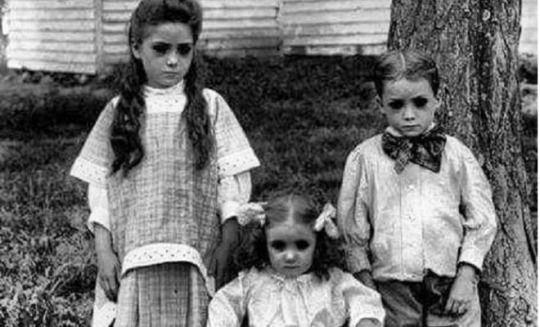
2) Mothman: A large, red-eyed creature that was described as stalking Point Pleasant from 1966-1967 in West Virginia. Typical descriptions depict the Mothman as bat-like in appearance that had a deafening screech. On December 15, 1967, the Silver Bridge collapsed killing 46 civilians. Strangely enough, Mothman seemingly disappeared after the tragedy, many believing that the Mothman was a harbinger of the bad omen.

3) Reptilians: Crazy conspiracy theory aside, Reptilians are shapeshifting extraterrestrials said to hail from the Alpha Draconis star system. David Icke, in particular, believes that they infiltrated the Earth to take over each of the world's governing bodies. Some also say that they terrorize humanity because they feed on negative emotions and what better way than to stoke the flames of anger and fearmongering than with propaganda?

4) Shadow People: Ever thing you catch something moving from the corner of your eye? Shadow People are believed to be different things ranging from guardian angels; demons; interdimensional beings, etc. The Hatman is often considered to be the leader of the Shadow People and is considered as being the most dangerous out of his wicked kind, but many say that he is an entirely different being.

5) Kuchisake-Onna: A Japanese urban legend, it is said that Kuchisake was once a beautiful woman married to a samurai. When the samurai felt that she was being unfaithful, he cut her mouth and killed her. Since then, she had become a vengeful spirit wearing a trench coat with a surgical mask. Carrying a pair of scissors, if she approaches a victim, she would ask them if they thought she was pretty. If they say no, she kills them. If yes, she would remove her mask to reveal her Glasgow grin and asks the question again. If the victim said yes again, she would make their mouth like hers.
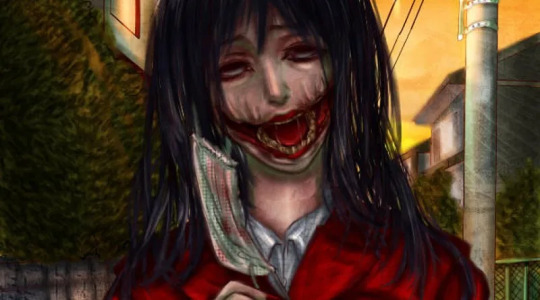
6) Teke Teke: Another ghost from Japanese folklore, Teke Teke was a woman or schoolgirl who was bisected by a train. One take of the legends have her ask her victims if they knew where her legs were. If they said no, she would rip their legs off. Another variation has Teke Teke go after the listener if they heard the story.
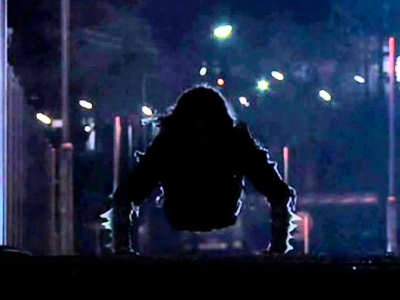
7) Eight Foot Tall: A demon disguising itself as an 8-ft tall woman wearing a sundress and straw hat. She targets children and is recognizable by her demonic droning.

8) Machine Elves: They are extradimensional entities often described as being sighted by those taking DMT. They claim to be the architects of different planes of existence but have unstable forms that continually contort. Everything happens at a fast pace in their world with all of them having high-pitched voices.

9) Greys: The stock character many think of when the possibility of extraterrestrial life is speculated. They are buglike in depiction with almond-shaped black eyes. Some say they were created by the reptilians as a slave race that deflected. They are commonly associated with alien abductions.

10) Butterfly People of Joplin: In 2011, a devastating tornado hit Joplin, Missouri that killed several people. But from the disaster, many children claimed that they experienced winged beings that saved them by holding back falling debris with their wings. One boy was found miles away in a field claiming that the Butterfly People wrapped him in it to smoothen his fall.


11) Chupacabra: Later takes of the cryptid posit the creature as being more canine in its features. They are accredited to draining the blood from livestock such as goats.

12) Jersey Devil: its origin story is really unique. The story goes that when a mother of 12 kids was due to have a 13th, she in annoyance, prayed for that child to be a devil. The baby is born and appears to be relatively normal. But then it, of course, transforms into a horrible abomination, escaping into the woods.

13) Bigfoot and the Abominable Snowman: Bigfoot or the Sasquatch is an ape-like, humanoid creature believed to have been sighted in several parts of North America. Some believe that the Sasquatch is either an ancient ape species that had escaped extinction, or some even assume that Bigfoot is the missing link that researchers have been searching for. The Abominable Snowman is similar to Sasquatch in some fashion, the exception being that the creature was sighted in the mountains of the Himalayas. There have been some samples of hair believed to have been those of a Yeti's that were analyzed to be the fur of an extinct species of bear from the time of the ice age.
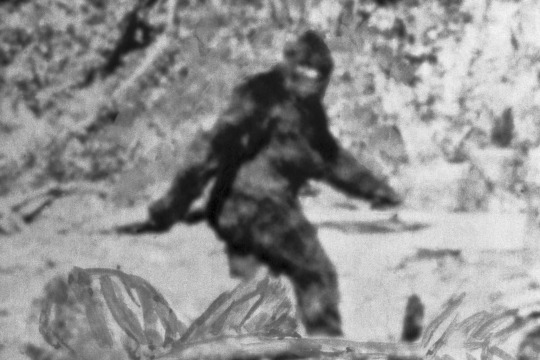
14) Mongolian Death Worm: In the Gobi Desert, there is believed to be a large species of worm that is said to have lethal venom that could kill anyone who even slightly touched the creature. It can even generate electricity. The worm was also known to hunt camels, and would then lay its eggs in the intestines.

15) The Loch Ness Monster: Probably one of the most famous examples of a cryptid in cryptozoology. Believed to be an ancient creature such as a plesiosaur, the Loch Ness Monster, or Nessie, is believed to inhabit Loch Ness. Described as having a long neck, flippers, and endless humps, accounts of the creature date far back to the time of Saint Columbia. Interest in the creature continued until in the 1930s, an alleged photograph of the monster dubbed the Surgeon's Photograph goes down in history as one of the best cases for the existence of Nessie. Even though the photograph was a hoax, many others had given their accounts of the Loch Ness Monster through the use of sonar and photography.
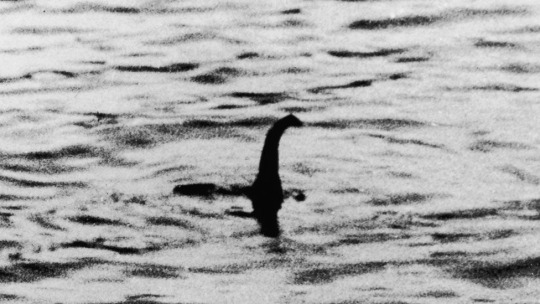
16) Black Stick Men are what happens when you take drawings of simple stick figures and give them sentience. They are believed to be two-dimensional in appearance, and can even generate electrical discharges. Unlike with other paranormal entities, Black Stick Men are not connected to supernatural events. So, they just appear randomly for no real rhyme nor reason. They are believed to feed on negative emotions and their presence incites aggression and uneasiness.

17) Wendigo: In Native American myth, a Wendigo is born when a hapless human commits the act of cannibalism in desperation. As punishment, they are transformed into a monster with an insatiable hunger that would never be quenched. They don't have a corporal form, but they are often represented as antlered-humanoids.

18) Ningen: These are giant, aquatic humanoid entities that are commonly sighted in the waters of the Arctic. Some species are alleged to grow to great lengths.
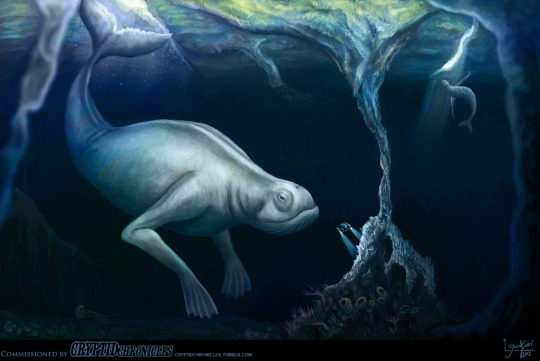
#ningen#cryptids#black-eyed children#beks#black-eyed kids#blackeyedkids#mothman#indrid cold#reptilians#shadow people#hat man#hatman#teke teke#kuchisake onna#eight foot tall#Butterfly People of Joplin#aliens#greys#grey aliens#jersey devil#loch ness monster#scotland#nessie#chupacabra#Mongolian death worm#dmt#dmt entities#machine elves#black stick men#bigfoot
534 notes
·
View notes